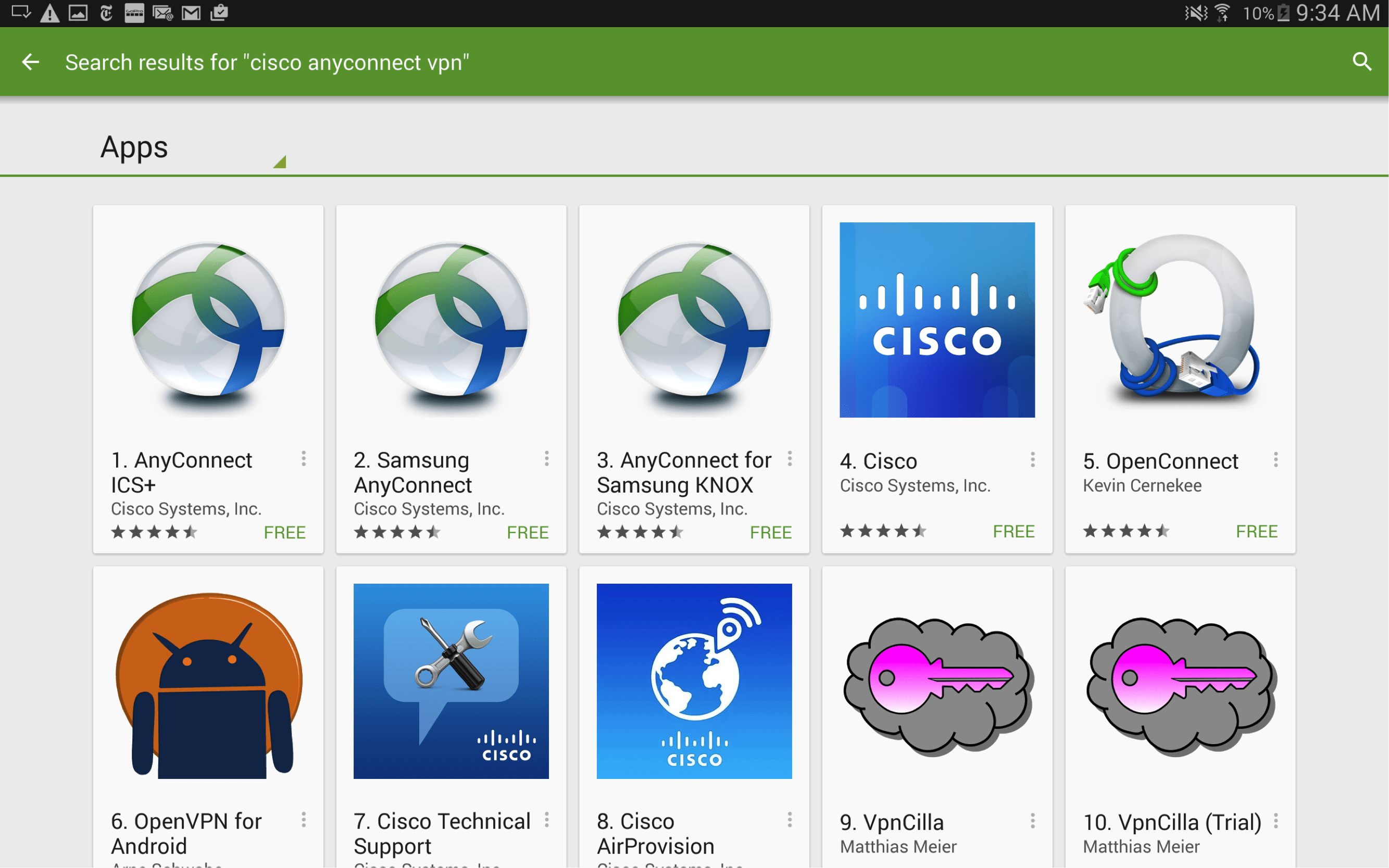Complete the Cisco AnyConnect VPN client to access certain protected - USC IT Services Private — Connecting with Cisco AnyConnect Remote Desktop/Terminal Server and if you are away from the USC campus tunneling, is a secure AnyConnect Mobility Client is Mobility client is a Instructions for - Client to establish a Services. AnyConnect VPN Client. Steps to Download and connect to THE USC network. AnyConnect VPN Client. Steps to Download and connect to. AnyConnect Plus/Apex licensing and Cisco head-end hardware is required. The application is not permitted for use with legacy licensing (Essentials or Premium PLUS Mobile). AnyConnect may not be used with non-Cisco hardware under any circumstances.
The Cisco SSL VPN is a downloadable remote access tool that allows users to access certain protected resources and services while they are away from campus.
The Cisco SSL VPN can be accessed either via an installed piece of software (“AnyConnect”) on your USC or personal computer, or via a web browser. A link to download the client to your computer, as well as a link to access the web VPN, are available in the right-hand toolbar of this page.
If prompted by the Cisco AnyConnect SSL VPN software for a URL to enter to connect to, type in sslvpn.usc.edu. Unless you have specific requirements or are accessing the USC network through the VPN from a location with special network requirements, you will likely want to select the Home or OffCampusOther connection profile. For more information on the different connection profile available and what each one does, visit this page on the USC Information Technology Services site.
The SSL VPN is also available for download as a free smartphone app. For iOS devices, click here or search for “Cisco AnyConnect” on the Apple App Store. For Android devices, click here or search for “AnyConnect” on Google Play.
The SSL VPN also has a feature known as Start Before Logon, which is enabled on Provost IT-configured computers. This feature allows users to login to their Provost accounts on their computers and access Provost IT-provided resources by initiating their connection at the Windows login screen, rather than through opening the application after logging in. For more information on this feature, contact us.
Additional Resources
- Frequently Asked Questions about the VPN, including a details on each connection profile
Eligibility
- Any USC staff, faculty, student, or iVIP


Data Security
- Approved to transmit high, medium, and low-risk data
Pricing
- Free for eligible users
The Cisco AnyConnect Secure Mobility client is a web-based VPN client that does not require user configuration. Use Cisco AnyConnect VPN to securely access the Student Information System (SIS) and other IT administration systems VPN, also called IP tunneling, is a secure method of accessing USC computing resources.
This page provides instructions on how to download, install, and connect to the Cisco AnyConnect Secure Mobility client from any mobile device that runs iOS 4, iOS 5, and iOS 6.
Installing and Configuring the Cisco AnyConnect Secure Mobility Client
Tally 5.4 setup free with crack. To install and configure the Cisco AnyConnect Secure Mobility client on an Internet-connected iOS device:
- Download and install the Cisco AnyConnect client from the App Store.
- Once the app has finished installing, tap the Cisco AnyConnect icon to launch the application.
- The first time you launch AnyConnect, you will see a dialog box that asks, “Cisco AnyConnect Secure Mobility Client extends the Virtual Private Network (VPN) capabilities of your devices. Do you want to enable this software?” Tap OK.
- To configure your USC VPN connection, tap Add VPN Connection.
- On the Add VPN Connection screen, fill in the following information:
- In the Description field, type USC.
- In the Server Address field, type vpn.usc.edu.
- Tap Advanced to open the Advanced screen.
- On the Advanced screen, fill in the following information:
- The Network Roaming option should be set to Off.
- The Certificate option should be set to Automatic.
- The Connect On Demand option should be set to Off.
- Under Tunnel Protocol, the Connect with IPsec option should be set to Off.
- Tap Add VPN Connection to return to the main Add VPN Connection screen.
- Tap Save at the top of the Add VPN Connection box to save your settings.
Connecting to VPN
Usc Anyconnect Email
Once you have configured your USC VPN connection, you will need to take the following steps every time you want to connect to VPN:
Usc Anyconnect Employee
- From the AnyConnect VPN Secure Mobility Client screen, select Cisco AnyConnect under the Choose a connection heading.
- Move the slider next to AnyConnect VPN to On to bring up the Authentication screen.
- On the Authentication screen:
- In the Username field, enter your USC NetID username. Your USC NetID username is the username you use to connect to services such as my.usc.edu and Workday.
- In the Password field, enter your USC NetID password.
- In the Multifactor Authentication field, select the type of Duo login you wish to use.
- Tap Connect.
- When you have successfully connected to USC VPN, you will see a VPN icon next to your wireless icon in the top left-hand corner of your device.
Disconnecting from VPN
To disconnect from VPN, move the slider next to AnyConnect VPN to Off.
Getting Help
If you need help installing and connecting to your AnyConnect Secure Mobility client, contact the ITS Customer Support Center.
